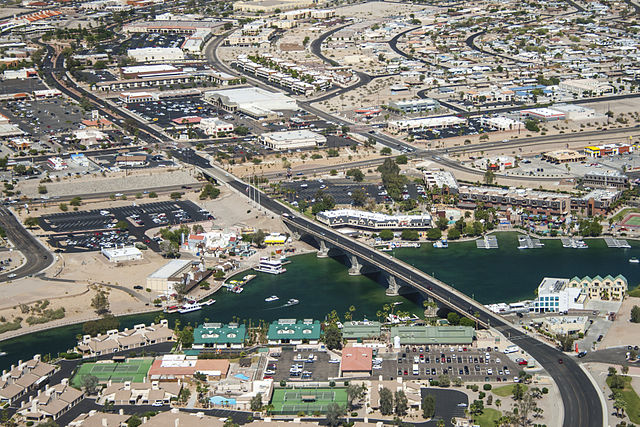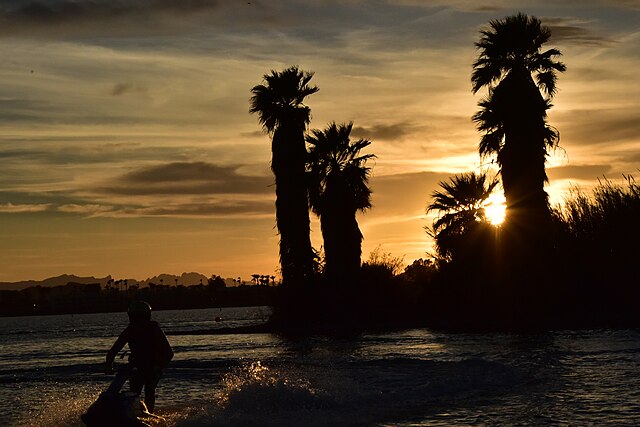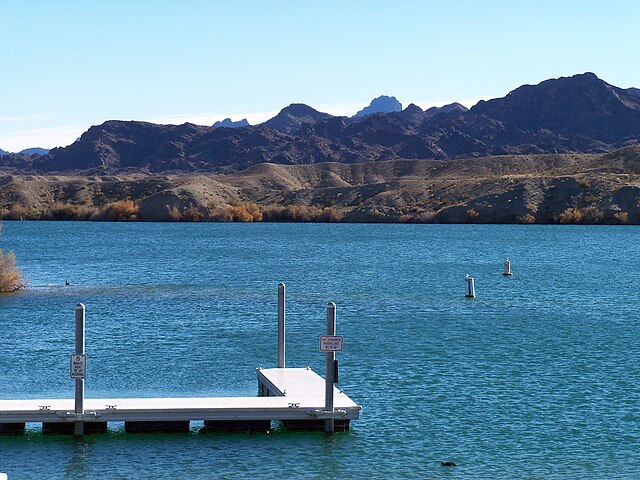Lake Havasu City, Arizona, is a sun-soaked paradise nestled along the Colorado River, famous for its sparkling waters and the iconic London Bridge. Whether you’re planning to boat, fish, hike, or just soak up the desert vibes, understanding Lake Havasu’s weather is key to making your trip unforgettable. So, what’s the weather like in this desert oasis? Let’s dive into the seasons, temperatures, and insider tips to help you pack, plan, and play like a pro.
Why Lake Havasu’s Weather Matters for Your Trip
Picture this: you’re cruising across Lake Havasu’s crystal waters, the sun warming your skin, and a gentle breeze keeping things just right. Sounds perfect, right? But the desert climate can throw curveballs if you’re not prepared. Lake Havasu’s weather shapes everything from your wardrobe to your itinerary. Knowing what to expect—whether it’s triple-digit summer heat or chilly winter nights—ensures you’re ready for adventure, not scrambling for shade or a sweater.
A Desert Climate with a Twist
Lake Havasu sits in the Sonoran Desert, which means hot, dry days are the norm for much of the year. But the lake itself adds a unique twist, creating a microclimate that’s slightly milder than other desert spots. Humidity is low, and rain is rare, but when storms roll in, they can be dramatic. This mix of desert heat and water-driven weather makes Lake Havasu a year-round destination, but each season has its own personality.
Lake Havasu Weather by Season
Lake Havasu’s weather varies wildly from season to season, so let’s break it down. Whether you’re chasing endless summer or cooler vibes, here’s what you’ll find.
Spring: The Sweet Spot (March–May)
Spring in Lake Havasu is like hitting the weather jackpot. Daytime temperatures hover between 70°F and 90°F, perfect for boating, hiking, or exploring the London Bridge. Nights cool down to the 50s and 60s, so you might need a light jacket for evening strolls along the Bridgewater Channel. Rainfall is minimal, averaging less than an inch a month, and the desert blooms with wildflowers, adding pops of color to your adventures. It’s no wonder spring is peak season for visitors!
Tips for Spring Visitors

Pack light layers—think t-shirts, shorts, and a hoodie for evenings. Sunscreen is a must, as the sun is strong even in March. Spring events like the Desert Storm Poker Run draw crowds, so book accommodations early. If you’re hiking, trails like the SARA Park Crack-in-the-Mountain are stunning this time of year.
Summer: Sizzling Hot (June–August)
Summer in Lake Havasu is not for the faint of heart. Daytime temps often soar past 100°F, sometimes hitting 120°F, like during the tragic heat wave in July 2024 that made headlines. Nights stay warm, rarely dipping below 80°F. The lake is a lifesaver, offering a cool escape for boaters and swimmers. Rain is scarce, but when it comes, it’s often in short, intense bursts during the monsoon season (mid-July to September).
Beating the Summer Heat
Stay hydrated—carry a water bottle everywhere. Opt for early morning or late afternoon activities to avoid peak heat. Boating is king in summer, so rent a pontoon or join a tour to stay cool on the water. Indoor attractions like the Lake Havasu Museum of History are great for escaping the midday sun. And don’t forget a wide-brimmed hat!
Fall: Warm Days, Cool Nights (September–November)
Fall is another golden season in Lake Havasu. September starts hot, with highs in the 90s, but by November, you’re looking at comfortable 60s to 80s during the day and crisp 40s to 50s at night. It’s ideal for outdoor activities like fishing or off-roading in the nearby desert. Monsoon storms taper off, leaving clear skies and stunning sunsets that make every evening feel like a postcard.
Fall Activities to Try
Pack for warm days and cooler nights—jeans, t-shirts, and a light jacket work well. Fall is perfect for events like the IJSBA World Finals, a jet ski racing extravaganza. If you’re into fishing, Lake Havasu’s bass population thrives in fall, so grab a rod and hit the water. Hiking trails like the Mohave Sunset Trail offer breathtaking views without the summer scorch.
Winter: Mild and Sunny (December–February)
Winter in Lake Havasu is a dream for snowbirds escaping colder climates. Daytime highs range from 60°F to 70°F, with nights dropping to the 40s. Rain is rare, and snow is practically unheard of. The mild weather makes it a great time for golfing, hiking, or exploring the desert trails. Plus, the crowds thin out, giving you more space to enjoy the lake and its surroundings.
Winter Packing Tips
Layers are your friend in winter—think long-sleeve shirts, a fleece, and sunglasses for those bright desert days. The Havasu Balloon Festival in January is a must-see, with colorful hot air balloons dotting the sky. If you’re into stargazing, the clear winter nights are perfect for spotting constellations over the lake.
Extreme Weather in Lake Havasu: What to Watch For
While Lake Havasu’s weather is mostly predictable, the desert can be unforgiving. Extreme heat, flash floods, and rare but intense monsoon storms can catch visitors off guard. Let’s look at what to watch for and how to stay safe.
Extreme Heat Warnings
Heat waves, like the one in July 2025 that pushed temps to 120°F, are serious business. These conditions can lead to heat-related illnesses, as seen in the tragic case of a 4-month-old in 2024. Always check weather alerts before heading out, especially in summer. If an extreme heat warning is in effect, limit outdoor activities, seek air-conditioned spaces, and drink plenty of water.
Monsoon Storms and Flash Floods
Monsoon season (June to September) brings occasional but dramatic storms. The 1974 monsoon, which caused $1.5 million in damage and multiple fatalities, is a stark reminder of their power. Flash floods can turn dry washes into raging rivers in minutes. If you’re hiking or off-roading, avoid low-lying areas during storms and stay updated with local weather apps.
How Weather Shapes Lake Havasu Activities

The weather in Lake Havasu isn’t just a backdrop—it’s practically a character in your adventure story. Here’s how it influences the best activities in town.
Boating and Water Sports
Lake Havasu is a boater’s paradise, and the weather plays a big role. Summer’s heat makes the lake the place to be, with water temps in the 80s. Spring and fall offer calmer winds, ideal for wakeboarding or paddleboarding. Even in winter, mild days make boating enjoyable, though you’ll want a wetsuit for water sports. Events like the Desert Storm Shootout thrive in warm weather but can be disrupted by high winds, as seen in the 2025 boat flip incident.
Hiking and Outdoor Adventures
The desert trails around Lake Havasu, like those in SARA Park or Havasu National Wildlife Refuge, are best explored in spring, fall, or winter when temperatures are manageable. Summer hiking is doable but requires early starts and lots of water. The weather also affects trail conditions—monsoon rains can make paths slippery, so check forecasts before heading out.
Fishing and Wildlife Watching
Lake Havasu’s mild winters and warm falls are prime for fishing, with bass and catfish biting strong. Birdwatchers will love the Havasu National Wildlife Refuge, where cooler months bring migratory birds. The weather’s clarity in fall and winter makes spotting wildlife a breeze, but summer heat can drive animals to seek shade, so plan early morning outings.
Packing for Lake Havasu’s Weather
Packing for Lake Havasu is like preparing for a choose-your-own-adventure book. The weather dictates your gear, so here’s a quick guide. Summer calls for swimwear, flip-flops, and lightweight, breathable clothing—think tank tops and shorts. Spring and fall need versatile layers: t-shirts, jeans, and a jacket for cooler nights. Winter travelers should pack long-sleeve shirts, a warm layer, and sturdy shoes for hiking. Year-round essentials include sunscreen, sunglasses, a hat, and a reusable water bottle to stay hydrated.
Weather Apps and Resources for Lake Havasu
Want to stay ahead of the weather? Apps like AccuWeather and Weather Underground offer detailed forecasts for Lake Havasu City, including 10-day predictions and real-time alerts. Local news outlets like Havasu News also provide updates on extreme weather events. For monsoon season, the National Weather Service’s Las Vegas office is a go-to for storm warnings and safety tips.
How Climate Change Affects Lake Havasu
Climate change is turning up the heat—literally. Lake Havasu has seen hotter summers and more intense heat waves in recent years, with 2024 and 2025 breaking temperature records. This trend could mean longer boating seasons but also more extreme weather events. Conservation efforts, like those by the Western Arizona Humane Society, highlight the need to protect local wildlife from changing conditions. Staying informed about climate trends can help you plan sustainable trips.
Weather’s Impact on Local Events

Lake Havasu’s packed event calendar thrives on its sunny weather. The Havasu Balloon Festival in January takes advantage of crisp, clear winter skies. Summer’s Desert Storm Poker Run and fall’s IJSBA World Finals rely on warm temps for water-based fun. But extreme weather can disrupt plans—high winds in 2025 caused a boat to flip during the Desert Storm Shootout. Always check event updates and weather forecasts before attending.
Tips for Staying Safe in Lake Havasu’s Weather
Safety first, right? Here are some pro tips to keep your Lake Havasu trip worry-free. In summer, avoid outdoor activities from 10 a.m. to 4 p.m., when the sun is brutal. During monsoon season, steer clear of washes and low areas to avoid flash floods. Always carry water, even on short hikes, and let someone know your plans if you’re exploring remote trails. If you’re boating, check wind forecasts to avoid rough waters.
Why Lake Havasu’s Weather Makes It a Year-Round Destination
No matter the season, Lake Havasu’s weather has something for everyone. Love scorching summers? Hit the lake for a refreshing dip. Prefer mild days and cool nights? Spring and fall are calling your name. Even winter offers sunny skies and comfortable temps for outdoor fun. The key is planning around the weather to make the most of your trip.
Conclusion: Plan Your Lake Havasu Adventure with Weather in Mind
Lake Havasu City is a playground of sun, water, and desert beauty, and its weather sets the stage for every adventure. From sizzling summers to mild winters, each season offers unique experiences, whether you’re boating, hiking, or chasing sunsets. By understanding the climate, packing smart, and staying safe, you can make every moment in Lake Havasu unforgettable. So, what are you waiting for? Check the forecast, grab your sunglasses, and dive into the desert oasis of Lake Havasu!
Frequently Asked Questions
1. What’s the best time to visit Lake Havasu for mild weather?
Spring (March–May) and fall (September–November) offer the best weather, with daytime temps between 60°F and 90°F and cooler nights. These seasons are ideal for outdoor activities like hiking and boating.
2. How hot does it get in Lake Havasu during summer?
Summer temperatures often exceed 100°F, sometimes reaching 120°F. It’s crucial to stay hydrated, seek shade, and plan water-based activities to beat the heat.
3. Does Lake Havasu get a lot of rain?
No, Lake Havasu is very dry, with annual rainfall around 4 inches. Most rain comes during the monsoon season (June–September), often in short, intense storms.
4. Are there any weather-related safety concerns in Lake Havasu?
Yes, extreme heat in summer and flash floods during monsoon season are the main concerns. Always check weather alerts, carry water, and avoid low-lying areas during storms.
5. Can I boat on Lake Havasu year-round?
Absolutely! Boating is possible year-round, though summer is the most popular. Winter boating is great with mild temps, but you may need a wetsuit for water sports.

